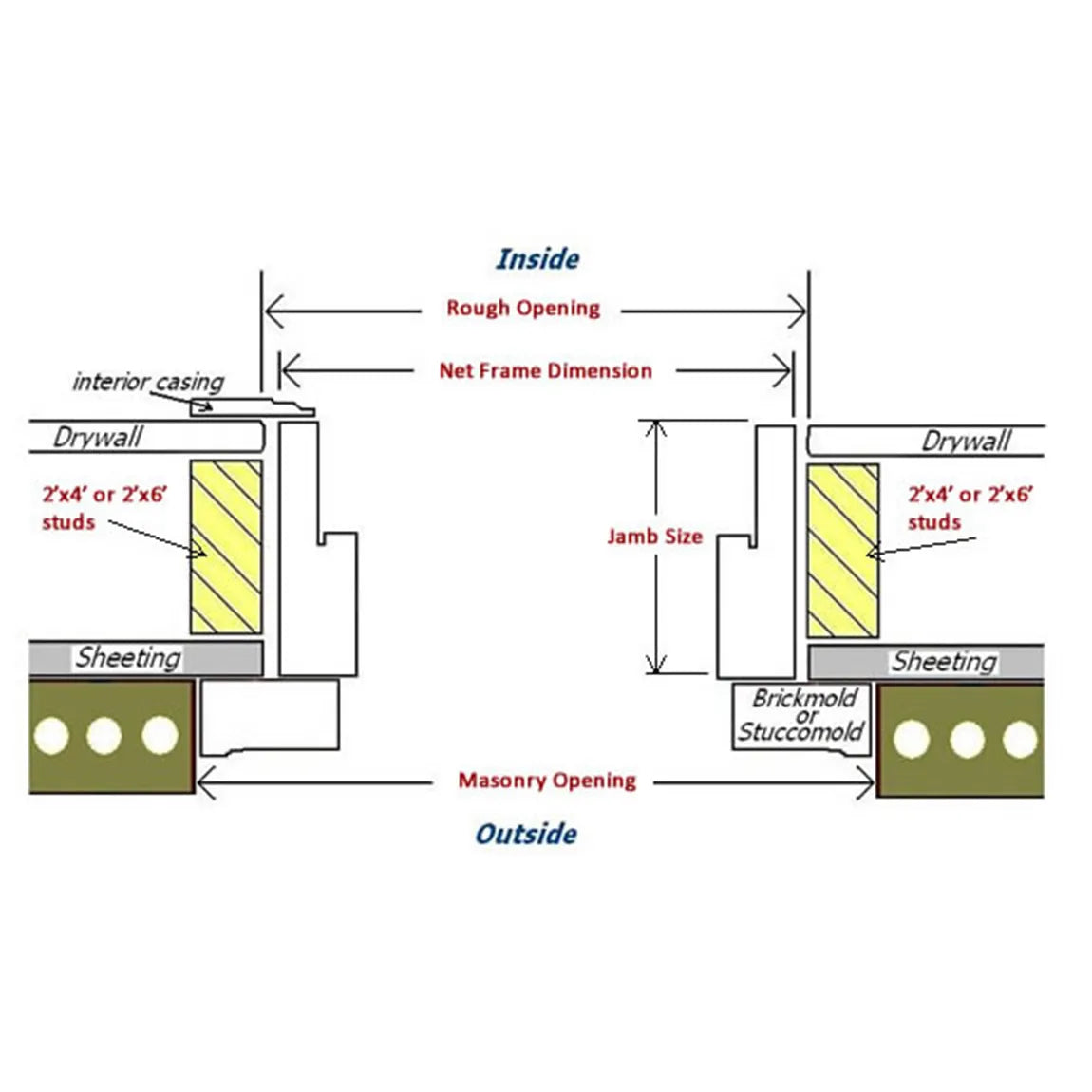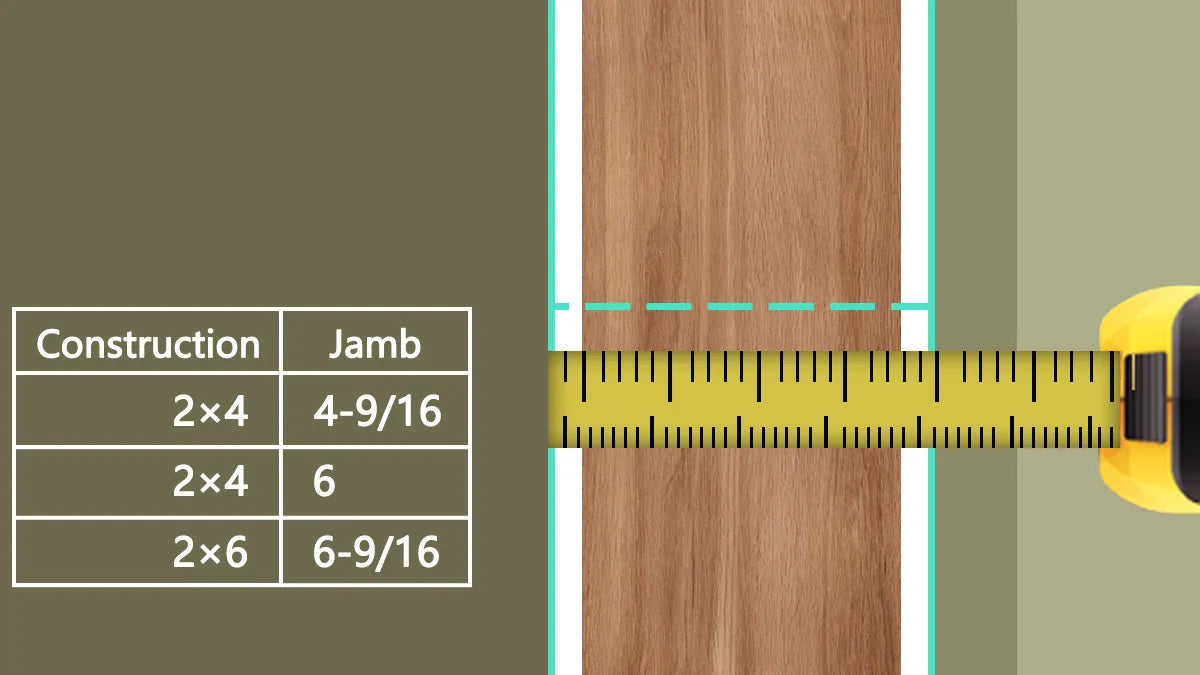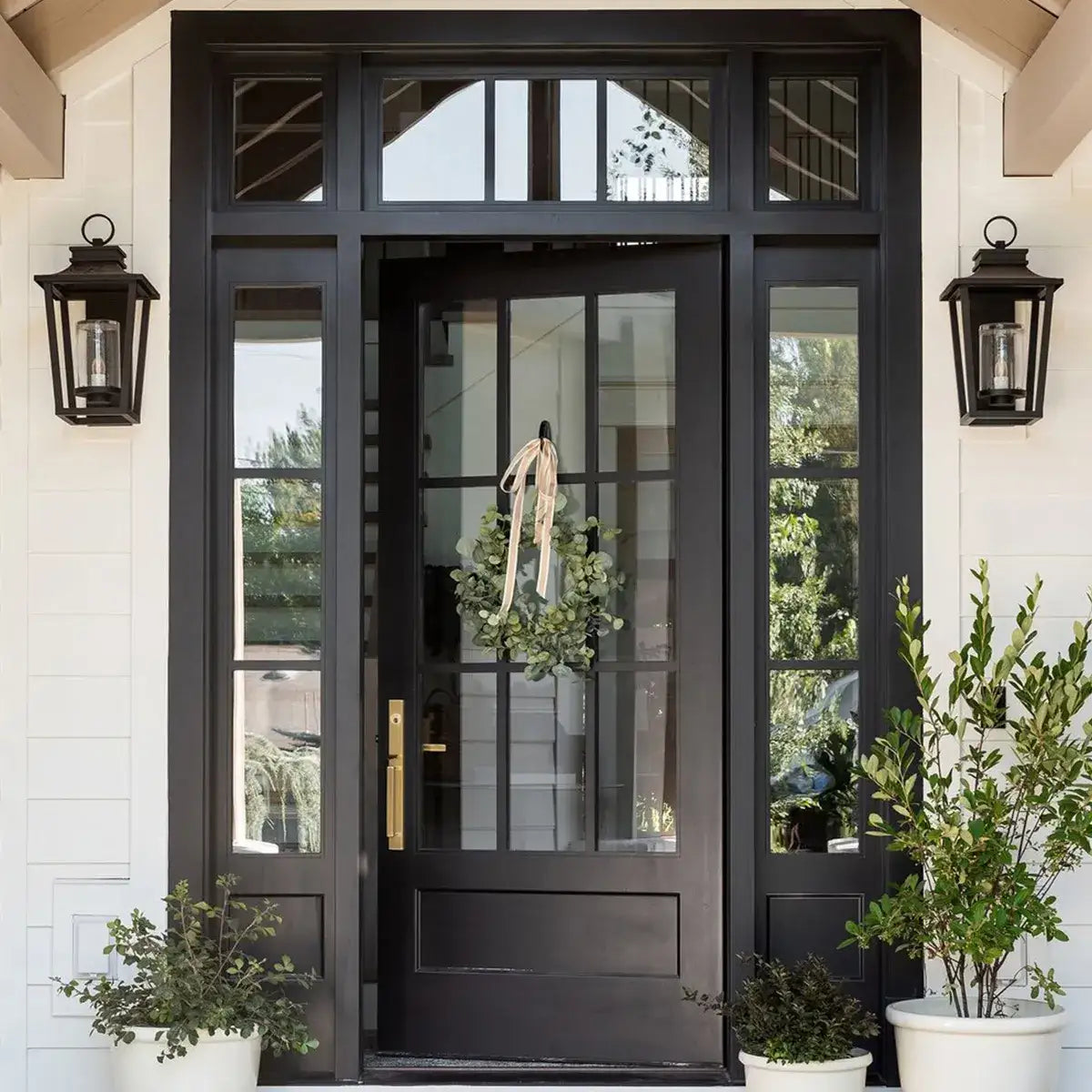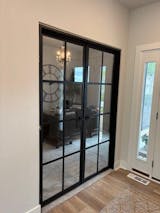
What is Jamb?
A Door Jamb is an essential component of your door frame. It is the vertical portion that secures the door and supports the hinges and strike plate.
Acting as the backbone of the frame, the door jamb ensures both the stability and functionality of the door. Whether you’re installing a new door or replacing an old one, understanding the importance of the door jamb is essential for proper security and performance.
Measure Jamb Size
Jamb Size refers to the total thickness of the wall, including sheetrock, sheathing, and any exterior siding, into which the door unit will fit. The wall thickness determines the width of the door jamb when ordering pre-hung units. This measurement is critical when replacing a door. If the jamb is too narrow, the framing or rough opening may be exposed. If it's too wide, the jamb will need to be trimmed and adjusted for a proper fit.


Typical Jamb Sizes
4 9/16" jamb for 2x4 framing with ½" drywall
Most common jamb size used in standard residential construction where 2x4 studs are used for interior walls. It accommodates a typical wall thickness, including the drywall.
6" jamb for 2x4 framing with stucco or thick drywall
In cases where the interior framing is still 2x4, but the exterior wall finish is stucco or thicker drywall (often 5/8" or more), a 6" jamb is used. This allows the door or window frame to fit correctly within the thicker wall construction.
6 9/16" jamb for 2x6 framing or block walls
Commonly used for exterior walls to provide extra insulation space. It's also used for block walls or thick masonry walls, ensuring the door or window frame accommodates the increased wall thickness.







